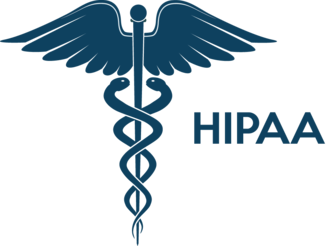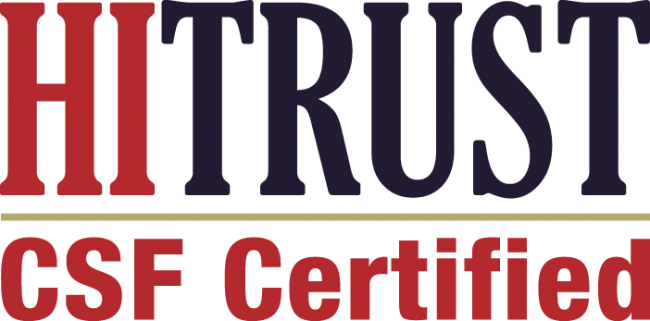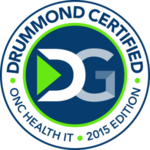Healthcare organizations face mounting pressure to improve care coordination while reducing costs and enhancing patient outcomes. One critical area that often presents challenges is referral management, the process of coordinating patient care between primary care providers and specialists. A poorly managed referral system can lead to delayed care, frustrated patients, and lost revenue. However, implementing an effective referral management system can transform these challenges into opportunities for improved patient satisfaction and operational efficiency.
This comprehensive guide outlines five essential steps to successfully implement a referral management system in your healthcare organization, complete with change management strategies to ensure smooth adoption.
Step 1: Assess Your Current Referral Process and Define Clear Objectives
Understanding Your Starting Point
Before implementing any new system, it’s crucial to thoroughly evaluate your existing referral processes. This assessment should encompass every touchpoint in the patient journey, from initial referral creation to specialist appointment completion.
Key areas to evaluate:
- Current referral volume and patterns
- Average time from referral initiation to specialist appointment
- Communication gaps between referring providers and specialists
- Patient satisfaction scores related to referral experiences
- Administrative burden on staff
- Revenue leakage due to incomplete or delayed referrals
- Compliance with regulatory requirements
Data Collection Methods: Conduct surveys with referring physicians, specialists, and administrative staff. Analyze patient flow data and identify bottlenecks in your current process. Review patient complaints and feedback specifically related to referral experiences.
Setting SMART Objectives
Once you understand your current state, establish specific, measurable, achievable, relevant, and time-bound (SMART) objectives for your referral management system implementation.
Example objectives might include:
- Reduce average referral processing time by 50% within six months
- Increase referral completion rates to 95% within one year
- Improve patient satisfaction scores for referral experiences by 30%
- Decrease administrative time spent on referral coordination by 40%
- Achieve 100% compliance with referral authorization requirements
Change Management Tip: Involve key stakeholders in the objective-setting process. When team members participate in defining goals, they’re more likely to champion the implementation and work toward achieving those objectives.
Step 2: Build a Cross-Functional Implementation Team
Assembling the Right Team
Successful referral management system implementation requires collaboration across multiple departments and specialties. Your implementation team should include representatives from various stakeholder groups to ensure all perspectives are considered.
Essential Team Members:
- Executive Sponsor: A C-level leader who can provide resources and remove organizational barriers
- Project Manager: Someone with experience in healthcare IT implementations
- Clinical Champions: Respected physicians from both primary care and specialty areas
- IT Representatives: Technical experts who understand your existing systems and infrastructure
- Administrative Staff: Those who currently handle referral coordination
- Patient Representatives: Advocates who can provide the patient perspective
- Quality Assurance Personnel: Individuals focused on compliance and quality metrics
Defining Roles and Responsibilities
Each team member should have clearly defined roles and responsibilities. The executive sponsor provides strategic direction and resources, while clinical champions help with physician adoption. IT representatives handle technical integration, and administrative staff provide operational insights.
Change Management Strategy: Create a communication plan that keeps all stakeholders informed throughout the implementation process. Regular updates, milestone celebrations, and transparent communication about challenges help maintain momentum and support.
Step 3: Select and Configure the Right Technology Solution
Technology Requirements Assessment
Not all referral management systems are created equal. Your technology selection should align with your organization’s specific needs, existing infrastructure, and long-term strategic goals.
Key features to evaluate:
- Integration capabilities with your Electronic Health Record (EHR) system
- Automated workflow capabilities
- Real-time tracking and reporting
- Patient communication tools
- Provider directory management
- Analytics and performance dashboards
- Mobile accessibility for providers
- Compliance and security features
The HealthViewX Advantage
When evaluating referral management solutions, HealthViewX Referral Management stands out as a comprehensive platform designed specifically for healthcare organizations seeking to streamline their referral processes. The system offers several key advantages that address common implementation challenges:
Seamless Integration: HealthViewX integrates smoothly with existing EHR systems, minimizing disruption to current workflows while enhancing functionality. This integration capability is crucial for maintaining productivity during the transition period.
Intelligent Automation: The platform automates routine tasks such as referral routing, appointment scheduling, and status updates, reducing administrative burden while improving accuracy and speed.
Real-Time Visibility: Healthcare organizations gain complete visibility into their referral pipeline with real-time tracking and comprehensive reporting capabilities, enabling data-driven decision-making.
Enhanced Communication: The system facilitates seamless communication between referring providers, specialists, and patients, ensuring everyone stays informed throughout the referral journey.
Configuration and Customization
Once you’ve selected your technology solution, the configuration phase is critical to success. Work closely with your vendor to customize the system to match your organization’s specific workflows and requirements.
Configuration considerations:
- Referral routing rules based on specialty, insurance, and geographic preferences
- Automated notification preferences for different user groups
- Custom fields to capture organization-specific data
- Integration points with existing systems
- User access controls and security settings
Change Management Focus: Involve end-users in the configuration process. When staff members see their input reflected in the system design, they develop ownership and are more likely to embrace the new technology.
Step 4: Develop Comprehensive Training and Support Programs
Multi-Modal Training Approach
Effective training is essential for successful system adoption. Different users have varying learning preferences and technical comfort levels, so your training program should accommodate these differences.
Training components should include:
- Interactive Workshops: Hands-on sessions where users can practice with the system in a controlled environment
- Role-Based Training: Customized sessions focused on specific user groups (physicians, nurses, administrative staff)
- Video Tutorials: Visual demonstrations of key processes
- Peer Mentoring: Pairing experienced users with those new to the system
Creating Super Users
Identify and train a group of “super users” who can provide ongoing support to their colleagues. These individuals should receive advanced training and become the go-to resources for questions and troubleshooting.
Super user characteristics:
- Strong technical aptitude
- Respected by their peers
- Good communication skills
- Enthusiasm for the new system
- Available to provide support during implementation
Ongoing Support Structure
Training shouldn’t end when the system goes live. Establish a robust support structure to help users navigate challenges and optimize their use of the system.
Support elements:
- Help desk with healthcare-specific expertise
- Regular refresher training sessions
- User feedback mechanisms
- System optimization reviews
- Performance coaching for struggling users
Change Management Strategy: Celebrate early adopters and success stories. When other staff members see their colleagues succeeding with the new system, they’re more likely to embrace the change themselves.
Step 5: Execute a Phased Rollout with Continuous Monitoring
Phased Implementation Approach
Rather than implementing the entire system organization-wide simultaneously, consider a phased approach that allows for learning and adjustment along the way.
Recommended phases:
- Phase 1 – Pilot: Start with a small group of engaged providers and a limited number of specialties
- Phase 2 – Expansion: Gradually add more providers and specialties based on lessons learned
- Phase 3 – Full Deployment: Complete the rollout to all relevant departments and providers
- Phase 4 – Optimization: Focus on advanced features and continuous improvement
Key Performance Indicators (KPIs)
Establish metrics to track the success of your implementation and identify areas for improvement.
Essential KPIs include:
- Referral Processing Time: Time from referral initiation to specialist appointment
- Completion Rates: Percentage of referrals that result in completed specialist visits
- Patient Satisfaction: Scores specific to the referral experience
- Provider Adoption: Percentage of providers actively using the system
- Administrative Efficiency: Time savings in referral coordination tasks
- Revenue Impact: Changes in referral-related revenue
- Quality Metrics: Compliance rates and clinical outcomes
Continuous Monitoring and Improvement
Implementation doesn’t end when the system goes live. Establish regular review cycles to assess performance and identify opportunities for optimization.
Monthly reviews should cover:
- KPI performance against targets
- User feedback and satisfaction
- System utilization rates
- Technical issues and resolutions
- Process improvement opportunities
Quarterly assessments should include:
- ROI analysis
- Strategic alignment review
- Competitive benchmarking
- Technology roadmap updates
- Staff satisfaction surveys
Change Management Best Practice: Maintain momentum by regularly communicating successes and improvements to all stakeholders. When people see positive results, they’re more likely to continue supporting and using the new system.
Overcoming Common Implementation Challenges
Physician Resistance
Healthcare providers are often skeptical of new technology, particularly if they’ve had negative experiences with previous implementations. Address this challenge by:
- Involving physicians in the selection and design process
- Demonstrating clear clinical value and time savings
- Providing excellent training and support
- Starting with willing early adopters who can influence their peers
- Showing respect for physicians’ time and expertise
Integration Complexities
Technical integration can be challenging, especially in organizations with multiple legacy systems. Mitigate these risks by:
- Conducting thorough technical assessments early in the process
- Working with experienced implementation partners
- Planning for adequate testing time
- Having rollback plans in case of technical issues
- Maintaining close communication between IT and clinical teams
Resource Constraints
Healthcare organizations often face budget and staffing limitations. Address resource challenges by:
- Building a strong business case that demonstrates ROI
- Seeking phased implementation options that spread costs over time
- Leveraging vendor support and expertise
- Cross-training staff to maximize flexibility
- Prioritizing high-impact areas for initial implementation
Measuring Success and ROI
Financial Impact Assessment
A well-implemented referral management system should deliver measurable financial benefits within the first year of implementation.
Revenue improvements typically include:
- Increased referral completion rates leading to more billable visits
- Reduced administrative costs through automation
- Improved patient satisfaction leading to increased loyalty
- Better compliance reducing risk of penalties
- Enhanced provider relationships increasing referral volume
Quality and Operational Benefits
Beyond financial returns, organizations typically see improvements in:
- Patient experience scores
- Provider satisfaction
- Care coordination quality
- Regulatory compliance
- Operational efficiency
Long-term Strategic Value
The true value of a referral management system extends beyond immediate operational improvements. Organizations often discover additional benefits such as:
- Enhanced data analytics capabilities
- Improved network management
- Better population health insights
- Stronger provider relationships
- Competitive differentiation in the market
Conclusion
Implementing a successful referral management system requires careful planning, strong leadership, and commitment to change management principles. By following these five steps, assessing your current state, building the right team, selecting appropriate technology, developing comprehensive training programs, and executing a phased rollout, your healthcare organization can transform its referral processes and achieve significant improvements in patient satisfaction, operational efficiency, and financial performance.
The key to success lies not just in selecting the right technology solution, but in approaching the implementation as a comprehensive organizational change initiative. Solutions like HealthViewX Referral Management provide the technological foundation, but success ultimately depends on how well you prepare your organization and support your staff through the transition.
Remember that implementation is just the beginning. The most successful organizations continue to optimize their referral management.






